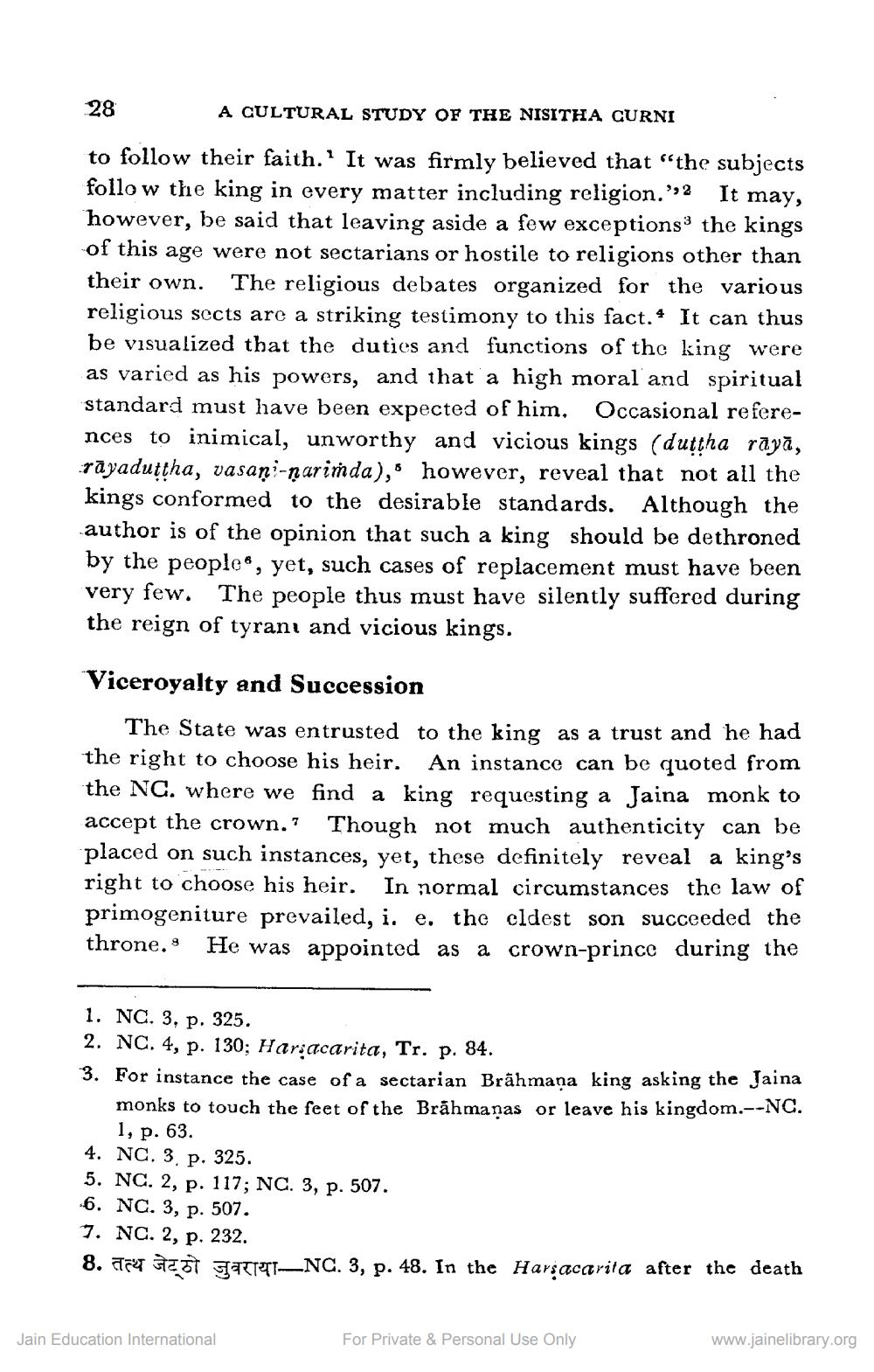________________
28
A CULTURAL STUDY OF THE NISITHA CURNI
to follow their faith. It was firmly believed that "the subjects follow the king in every matter including religion."2 It may, however, be said that leaving aside a few exceptions the kings of this age were not sectarians or hostile to religions other than their own. The religious debates organized for the various religious sects are a striking testimony to this fact. It can thus be visualized that the duties and functions of the king were as varied as his powers, and that a high moral and spiritual standard must have been expected of him, Occasional references to inimical, unworthy and vicious kings (duttha raya, rayaduṭṭha, vasani-narimda), however, reveal that not all the kings conformed to the desirable standards. Although the author is of the opinion that such a king should be dethroned by the people, yet, such cases of replacement must have been very few. The people thus must have silently suffered during the reign of tyranı and vicious kings.
Viceroyalty and Succession
The State was entrusted to the king as a trust and he had the right to choose his heir. An instance can be quoted from the NC. where we find a king requesting a Jaina monk to accept the crown." Though not much authenticity can be placed on such instances, yet, these definitely reveal a king's right to choose his heir. In normal circumstances the law of primogeniture prevailed, i. e. the eldest son succeeded the throne." He was appointed as a crown-prince during the
1. NC. 3, p. 325.
2. NC. 4, p. 130; Harsacarita, Tr. p. 84.
3. For instance the case of a sectarian Brahmana king asking the Jaina monks to touch the feet of the Brahmaṇas or leave his kingdom.--NC. 1, p. 63.
4. NC. 3, p. 325.
5. NC. 2, p. 117; NC. 3, p. 507.
6. NC. 3, p. 507.
7. NC. 2, p. 232.
8. —NC. 3, p. 48. In the Harsacarita after the death
Jain Education International
For Private & Personal Use Only
www.jainelibrary.org




